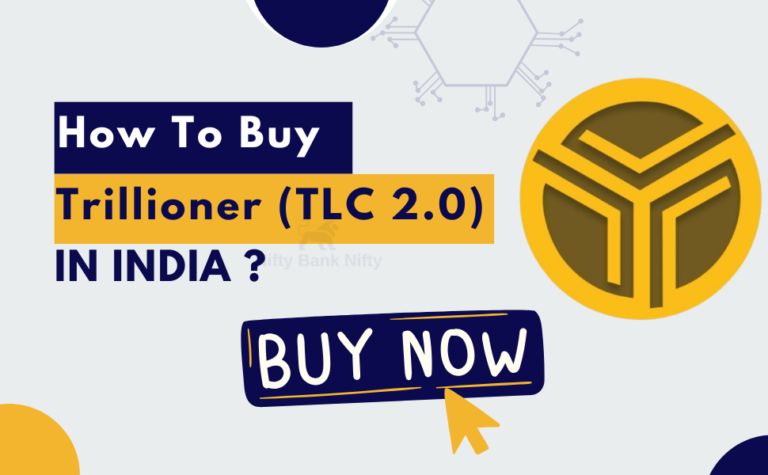TLC Coin Price in India in 2027 : Predictions And Comprehensive Insights
Cryptocurrency markets have become a focal point for investors worldwide, and India is no exception. Among the emerging tokens, TLC Coin has gained significant attention due to its innovative technology and potential for long-term growth. In this blog post, we’ll delve into various aspects of TLC Coin, including its price in India in 2027, live trends, predictions, and key factors influencing its valuation. Whether you’re a seasoned investor or new to the crypto space, understanding these dynamics can help you make informed decisions.
What is TLC Coin?
TLC Coin, short for The Luxury Coin, is a digital asset designed to facilitate secure, fast, and cost-effective transactions. Built on blockchain technology, TLC Coin has a robust ecosystem supporting various use cases, such as e-commerce, luxury goods trading, and financial transactions. Its adaptability and innovative approach have drawn significant interest from investors and traders.
How To Buy TLC 2.0 Coin In India: Step by Step Guide
TLC Coin Price in India Today
The current price of TLC Coin in India is an essential metric for traders and investors. As of today, the live price of TLC Coin fluctuates based on global market trends, supply-demand dynamics, and investor sentiment. For those interested in tracking real-time updates, cryptocurrency exchange platforms and live price tracking websites provide minute-by-minute data.
TLC Coin Price in India in 2027
Overview of Predictions
Predicting the price of any cryptocurrency five years into the future involves numerous variables. Analysts and market experts use historical data, current market trends, and advanced algorithms to project future prices. By 2027, TLC Coin’s price in India could be influenced by:
- Global Cryptocurrency Adoption: Increased mainstream acceptance of cryptocurrencies could positively impact TLC Coin’s valuation.
- Regulatory Environment in India: Clearer cryptocurrency regulations could boost investor confidence.
- Technological Advancements: Upgrades to TLC Coin’s ecosystem may enhance its utility and demand.
- Market Competition: The rise of competing tokens may influence TLC Coin’s market position.
Price Range Predictions
- Optimistic Scenario: If adoption and technology improvements align favorably, TLC Coin’s price in India could reach INR 10,000 per coin by 2027.
- Moderate Growth: With steady growth, the price might stabilize around INR 5,000.
- Conservative Estimate: In less favorable conditions, the price might remain between INR 2,000 and INR 3,000.
TLC Coin Price Today in Hindi
आज के दिनों में, TLC कॉइन की भाव भाव कीमत भारत रहती है। यह भाव क्रिप्टोक्रेंसी मार्केट के चुनोट्तियों, आवश्यकूर मुल्यों, और निवेशेक मूल्यों पर आधारित है। अपको दिखने के लिए क्रिप्टोक्रेंसी के प्लेटफॉर्म चेक करने की सलाह रहती है।
Factors Influencing TLC Coin Price in India in 2027
- Adoption and Partnerships: Collaborations with major industries and businesses could drive the coin’s adoption and price.
- Regulatory Developments: A positive regulatory framework in India would likely bolster confidence in TLC Coin.
- Market Sentiment: Social media trends, news updates, and overall sentiment in the cryptocurrency market significantly impact prices.
- Technological Enhancements: Innovations within the TLC ecosystem could add to its utility, thereby increasing demand and valuation.
- Global Economic Trends: Macro-economic factors, such as inflation and global economic growth, also play a critical role.
1 TLC Coin Price in India in 2027 in Rupees
Given the variables discussed, the projected price for 1 TLC Coin in India in 2027 could range between INR 2,000 and INR 10,000, depending on market conditions and adoption rates. The conversion of these prices into INR provides an accessible reference for Indian investors.
TLC 2.0 Coin Price in India 2027
TLC 2.0 Coin represents the next evolution in the TLC ecosystem. Expected upgrades and enhancements in this version could have a significant impact on its valuation. By 2027, the price of TLC 2.0 Coin in India could align closely with or even exceed the price of the original TLC Coin, depending on its success and adoption.
CTC Coin Price and Its Relation to TLC Coin
CTC Coin, often compared with TLC Coin, also holds a significant position in the cryptocurrency market. Although they serve different purposes, their prices can influence each other due to overlapping investor interest. Monitoring both coins could provide deeper insights into market trends.
Coin Price in India Today
Understanding the current coin prices in India is vital for making informed investment decisions. Real-time data on TLC Coin, CTC Coin, and other cryptocurrencies is available on various exchanges and platforms. Keeping track of these prices helps investors capitalize on market opportunities.
Coin Live Price Updates
Live price tracking is a game-changer for cryptocurrency investors. Platforms offering real-time updates on TLC Coin, CTC Coin, and other digital assets enable investors to make timely decisions, reducing risks and maximizing returns.
Conclusion
The TLC Coin price in India in 2027 presents an exciting opportunity for investors. With its innovative ecosystem and potential for growth, TLC Coin could see significant price appreciation in the coming years. However, as with any investment, understanding the risks and staying informed about market trends are crucial.
By monitoring live prices, understanding market dynamics, and keeping an eye on regulatory developments, investors can position themselves to capitalize on TLC Coin’s growth potential. Whether you’re exploring the price in Hindi or English, in rupees or dollars, the key is to stay informed and make calculated decisions.















